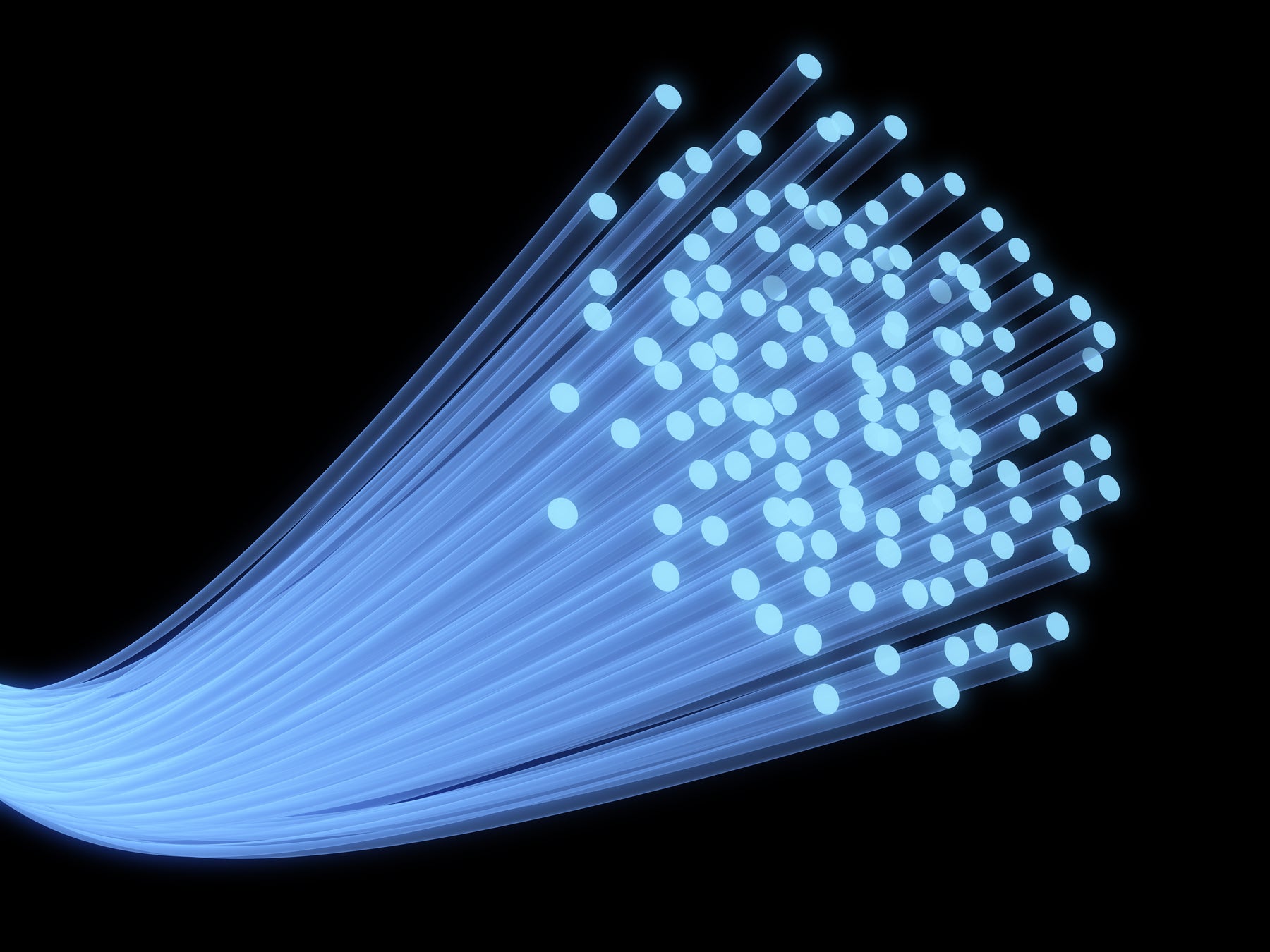
What is a fiber optic?
Fiber optics refers to both the material and the technology associated with providing and sensing light as well as the transmission of information as light pulses along a strand of fiber. Fiber optics are long strands of fiber approximately the diameter of a human hair. The most typical material for fiber optics is glass, but they can also be made of plastic, silica, or other exotic materials. Around the glass fiber core is another glass layer called cladding. The cladding creates the reflective surface, keeping the light inside the core. A buffer coating can also be added to protect the cladding and improve flexibility. Bundles of fiber optics, called optical cables, can transmit light signals over long distances. A fiber optic cable can be made of a few strands up to hundreds of thousands of strands.
The two main types of fiber optic cables are single-mode fiber and multi-mode fiber. Single-mode fiber has a smaller diameter and higher bandwidth; it works better for long distances as it reduces the potential for loss of signal strength. Multi-mode fiber can have a larger diameter and is frequently used for shorter distances. Many multi-mode fiber optics employ an LED to provide the light.
With communication grade fibers, data is transmitted through fiber optics as photons - commonly referred to as light particles - that pulse through the cable. A process called total internal reflection means the photons in the fiber can travel for long distances with minimal intensity reduction. This, of course, depends on the wavelength of the light and the fiber composition. Higher speed and capacity and a resistance to electrical interference is why fiber optics have essentially replaced copper wire in long distance phone lines and link computers within local networks.
In addition to communications, fiber optics were originally and are still commonly used for decorative and task lighting as well as sensing applications. Fiber optics are also utilized for endoscopy and inspecting the interiors of manufactured products. These applications rely on visible wavelengths of light with one bundle of fiber providing illumination and another coherent fiber bundle working with a lens to capture images. Specially designed fibers are used in applications like fiber optic sensors and fiber lasers. Additional uses for fiber optics include:
- Microscope Lighting
- Quality control inspection lighting
- PCB and Assembly task lighting
- Energy power plants Flame sensing
- Camera lighting for machine vision systems
- Medical and industrial device lighting




